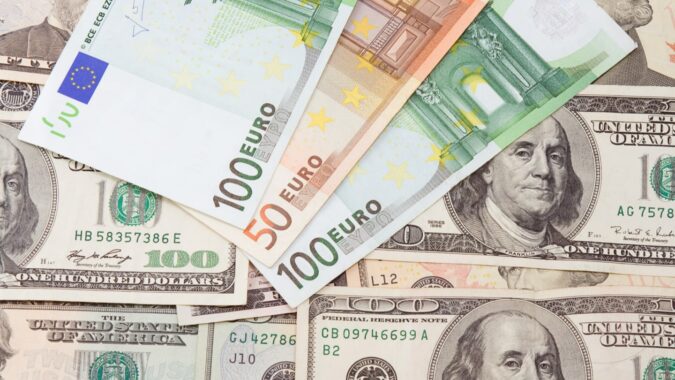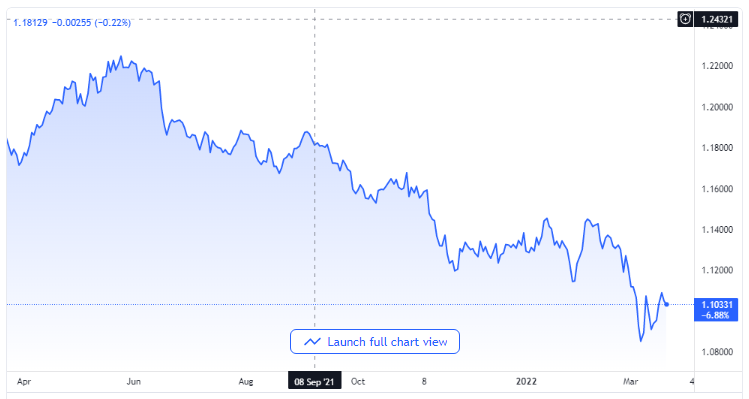
The EUR/USD currency pair is aiming to go beyond its Friday’s pullback in the midst of alternative sets of risk appetites trending as the new week opens up for business.
Special Focus for the Pair on Jerome Powell, Geopolitics
The European currency pair has started the new week in the vicinity of the mid-1.1000 area in the absence of traction in any of the directions. There is no significant recovery in bond yields on the two sides of the Atlantic Ocean and there is also no optimistic news coming from the conflict between Russia and Ukraine.
EUR/USD price chart. Source TradingView
As a matter of fact, Germany’s ten-year bond yields have left behind the latest weakness and have advanced up to the 0.40% zones while their peer in the United States is flirting with the 2.20% benchmarks once again.
There has been no form of reaction in the Euro since the European Central Bank’s President, Christine Lagarde, stated earlier in the European session that she is yet to see any elements of stagnant inflation in the present context of things at a time when she equally ruled out possibilities of policy synchronization with the US Federal Reserve.
In European Domestic dockets, Germany’s Producer Price Index rose by 1.4% month-on-month and 25.9% for the year in February. On the other side of the Atlantic, Federal Reserve Chair, Jerome Powell, is scheduled to deliver an address alongside Raphael Bostic of the Federal Open Market Committee. What is due for release in the US docket is the Chicago Federal Reserve National Activity Index.
Events to Watch Out for Around the Euro
The Euro has thus marginally managed to bounce away from the low points it was at on Friday in the vicinity of 1.1000 areas, even though the initial bullish looks to have completely run out of energy at 1.1060 thus far. While at that, the flashes of strength that have been displayed by the Euro might appear to have been reinforced by widespread speculations by market forces that the European Central Bank is about to begin the implementation of interest rate increase circle at any moment by the end of the year.
Whereas, increased German bond yields, higher inflation rates, a low momentum in the recovery process of the economy, and significant data from key indicators in the Eurozone are all supporting a stronger monetary policy at least for now.













